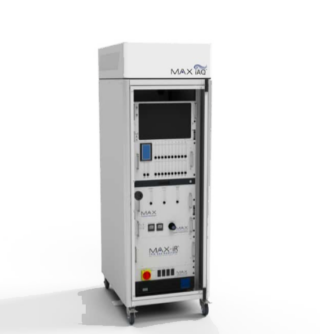The U.S. Environmental Protection Agency (EPA) issued a Proposed Interim Decision (PID) intended to reduce the risk regarding the use of ethylene oxide for all workers and others that work or live near sterilization facilities. A PID presents EPA’s proposed findings regarding the Federal Insecticide, Fungicide, and Rodenticide Act (FIFRA) safety standard. FIFRA is the Federal statute that governs the registration, distribution, sale, and use of pesticides in the United States. EPA regulates ethylene oxide’s use as a sterilant, which is considered an antimicrobial pesticide under FIFRA. At the same time as the issuance of this PID for ethylene oxide, the EPA Office of Air and Radiation (OAR) is proposing updates to the National Emission Standards for Hazardous Air Pollutants (NESHAP): Ethylene Oxide Commercial Sterilization and Fumigation Operations. The proposed requirements set forth in each EPA action are intended to be complementary.
Ethylene oxide is primarily used to sterilize new, single use, and reusable medical devices and equipment. Ethylene oxide is used to sterilize half of all sterilized medical devices, annually, including an estimated 95% of all surgical kits. Other uses of ethylene oxide include the sterilization of artifacts, archival material, library objects, cosmetics, and musical instruments. Ethylene oxide is also used to fumigate/sterilize dried herbs and spices, processed vegetables that have been dried or dehydrated, and other seasoning materials.
How will the PID affect operations at a commercial medical products sterilization facility?
EPA is proposing an approach requiring enhanced engineering controls combined with a much lower exposure threshold. Specifically, EPA is proposing to require the following engineering controls:
⦁ Air pressure gradient so that air is always flowing from areas of low potential ethylene oxide concentration to areas of higher ethylene oxide concentration.
⦁ Separation of office and sterilization area HVAC systems.
⦁ Ventilation of treated product storage areas.
⦁ Automation of movement of sterilized and aerated materials.
⦁ All-in-one processing (combination sterilizers).
The above proposed requirements can have obvious enormous implications to commercial sterilizers. Some sterilizers have a portion of these engineering controls in place, but others do not. “All in one sterilization” is when sterilized medical products aerate in the sterilization chamber and are not transferred to a separate aeration room. As acknowledged in the PID, “all in one sterilization” is not suitable for treatment of all medical products. Automating the movement of sterilized and aerated materials means a facility may no longer be allowed to transfer pallets of treated medical equipment from the chamber to aeration using a forklift, a process which takes minutes to perform. For medical products manufacturers that sterilize their own product, the decision will be to either make these changes or switch to commercial sterilization, which may not be an option.
How does this affect the existing 1 ppm OSHA PEL for ethylene oxide?
The OSHA airborne permissible exposure limit (PEL) for ethylene oxide is 1 ppm averaged over an 8-hour work shift and 5 ppm, as an excursion limit, averaged over a period of 15-minutes. EPA considers the OSHA PEL of 1 ppm insufficient to ensure that the use of ethylene oxide will not cause unreasonable adverse effects to workers and other who may be exposed to ethylene oxide. As part of the PID, EPA is proposing to require companies to amend the labels on ethylene oxide containers and drums to no longer include the OSHA PEL. To reduce worker exposure, EPA is proposing requirements based on a technologically measurable (i.e., quantifiable) ethylene oxide concentration of 10 parts per billion (ppb) in ambient air for real time measurements. Facilities would be required to monitor both processing and non-processing areas and the monitoring system would be required to have a visual and audio alarm to alert employees when a concentration of 10 ppb of ethylene oxide is exceeded. EPA is also proposing to require that Self Contained Breathing Apparatus (SCBA) or supplied airline respirators be required when EtO concentrations in a sterilization facility exceed 10 ppb. For employees who cannot wear SCBA, EPA is also proposing to require that employees would have the option to vacate the premises until the levels return to below 10 ppb. It is interesting to note that facilities that do not use ethylene oxide to sterilize medical equipment, but still use or manufacturer ethylene oxide, would still be regulated to the 1 ppm OSHA PEL. OSHA, on its website, acknowledges that many of its PELs are outdated and inadequate for ensuring protection of worker health. It is anticipated that OSHA will re-examine the ethylene oxide PEL.
What can a facility do to plan for these upcoming requirements?
The enhanced engineering controls being proposed by EPA have obvious engineering and operational challenges for a commercial sterilization facility. It is best for sterilizers to understand the regulations and beginning the process of accessing what, if any of the controls the facility already has in place. Discussing options with consultants, technology providers and engineering firms should start as soon as possible. Regarding the indoor air monitoring requirements, EPA understands that the supply of monitoring systems may be limited and a sudden demand may result in long lead time. It is likely best that a sterilizer access their equipment and upgrade well ahead of the deadline. Montrose has formed a global partnership with Thermo Scientific, the world leader in serving science, to provide real time ethylene oxide monitoring solutions which meet the requirements of the PID.
Montrose and Thermo have partnered to provide the MAX-iAQ TM FTIR continuous monitoring system. The MAX-iAQ TM is a fully automated 20-point ambient air monitoring solution for low-level detection of EtO, even in high humidity environments. It can quantify EtO to a detection limit below 1 ppb using advanced StarBoost™ technology while maintaining short cycle times. It is also designed to operate as a continuous monitor with little-to-no user interaction.
